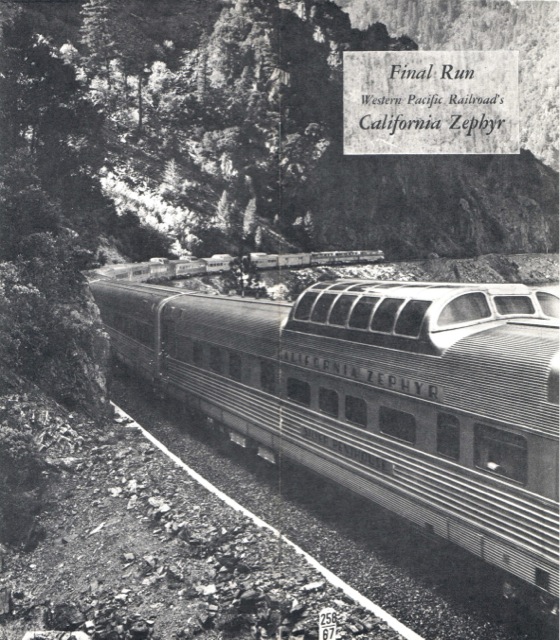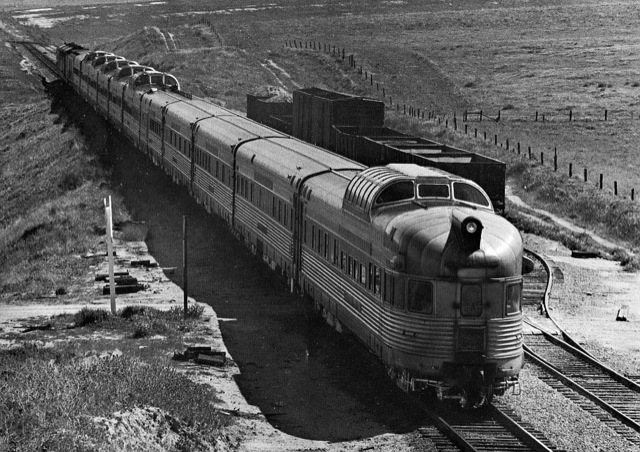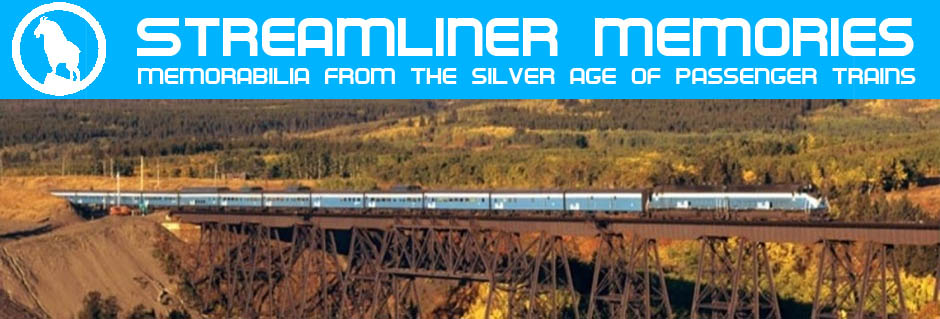In the late 1960s, the California Zephyr was one of the best-patronized long-distance trains in America. But it still lost money for the Western Pacific, which was a marginal railroad to begin with. So WP petitioned to discontinue the train and finally received permission to do so in 1970. This hastily printed booklet explains to passengers why the railroad couldn’t afford to keep running the train.

Click image to download a 3.1-MB PDF of this 12-page brochure. Click here to download a non-OCR version.
Apparently, the Interstate Commerce Commission would refuse to let railroads abandon money-losing trains if those trains were somehow vital to transportation in the communities those trains served. The brochure quotes the ICC decision saying that most “passengers are attracted to trains by aesthetic, rather than utilitarian considerations” and the train “is primarily a Sight seeing excursion.” As an economist, I have to quibble that it doesn’t matter what people are using the train for; if they ride it, it is producing some value for them and the government should discriminate between values it considers worthwhile and ones that it does not.

The last run of the California Zephyr at Midway, California, only has three sleepers, but it also has six dome cars to accommodate passengers eager for a last view of the Feather River Canyon from the rail line. Click image for a larger view. Photo from The Best of Our Past.
However, the brochure also notes that the Western Pacific’s losses on the train have ballooned from half a million dollars in 1966 to $2.5 million in 1969 (more than $12 million today). The ICC noted that the railroad’s profits were just $6 million in 1968, so the railroad would have to devote all of the profits it earned from freight operations for much of the year just to support one train.
Of course, the other solution was to raise fares to cover costs. But ridership had fallen by 50 percent between 1960 and 1968, and higher fares would have dragged ridership even lower. Today, lots of rail fans would gladly pay $1,000 to ride a dome car through the Feather River Canyon, but in 1970 dome trains were still common. The sad decision to discontinue the train was a severe blow for passenger train advocates in 1970, but it was probably the right one.

The biggest problem for the WP was that it didn’t pass through cities of any size from from Salt Lake until it reached Sacramento. There was very little local traffic, and the long distance passengers primarily loaded at several Bay Area stations and Salt Lake. There were almost no connecting lines between those two terminals so there was no interline traffic either. The same situation affected freight operations as well and contributed to the WP always being in shaky financial condition.
As the ICC alluded, the equipment was 20 years old in 1969 and in dire need of replacement. Even if the Rio Grange and Burlington were willing to order new equipment, the WP had no money to make that kind of capital expenditure. Pullman was out of the railroad passenger business by 1965, and Budd was only making subway and commuter cars. Where new cars could have been made is open to question even if the railroads had the will and money in 1969. I rode the Zephyr several times in the late 50’s and 60’s and really loved that train. Unfortunately, the equipment, even though well maintained, was worn out and increasingly unreliable by 1969.
It’s too bad, but passengers trains really were a dying breed, and there was no way to save them. We’ve seen with the long, money losing, taxpayer dollar support history of Amtrak that a single railroad had no hope maintaining a passenger train like the Zephyr. RIP, Zephyr. At least I had the chance to ride before it vanished into memory.
Jim